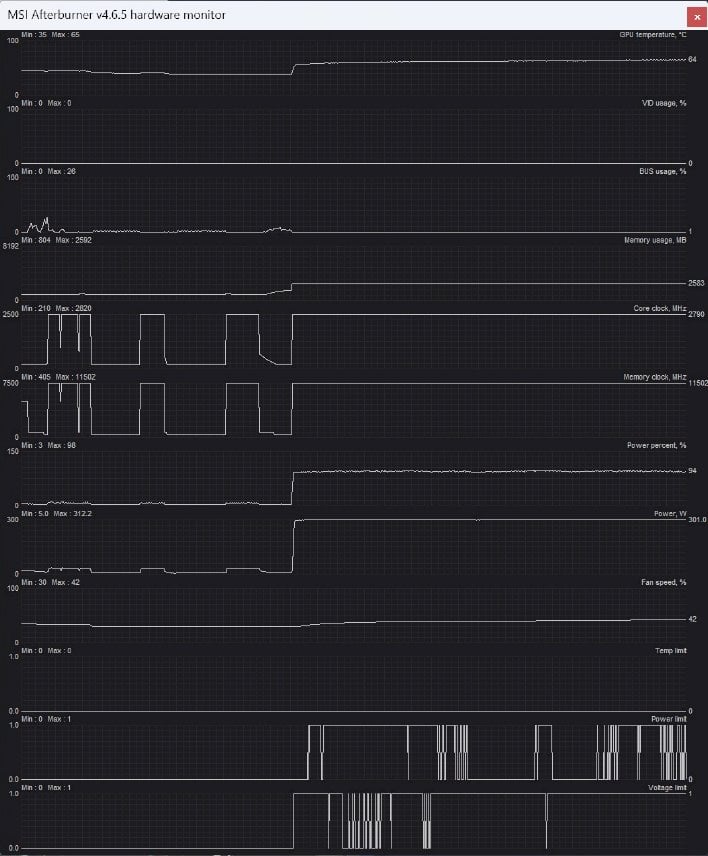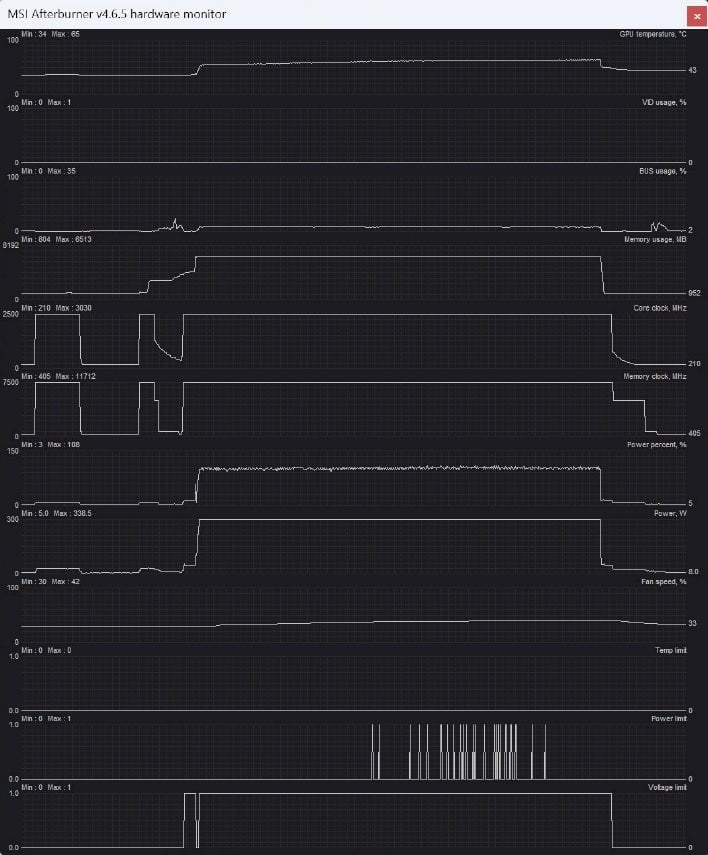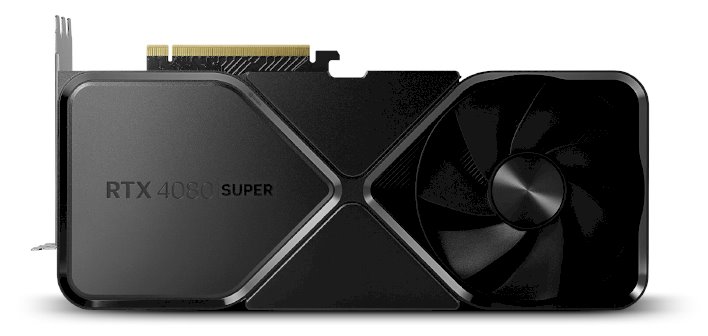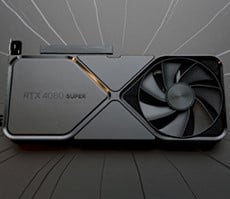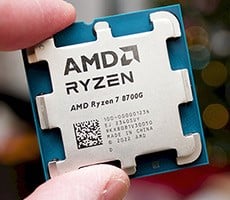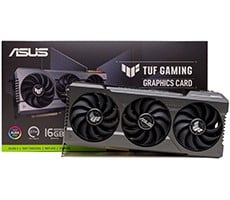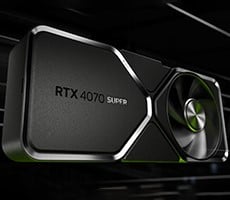GeForce RTX 4080 SUPER Review: Chasing RTX 4090, For Under $1K
The GeForce RTX 4080 SUPER may be fast, but there's always some room to tweak things further. With that in mind, we spent a little time overclocking the GeForce RTX 4080 SUPER to see what kind of additional performance we could wring from the card...
Overclocking The GeForce RTX 4080 SUPER
As we've mentioned numerous times in the past, GeForce RTX 40 series cards feature GPU Boost, which scales frequencies and voltages dynamically within pre-determined power and temperature limits, based on the GPU's workload and other environmental factors. Should a temperature or power limit be reached, GPU Boost will drop down to the previous boost frequency / voltage stepping, to bring power and temperatures down gradually and not cause any significant performance swings. If there are power and thermal headroom available, however, the GPU will boost as high as it can for as long as it can to maintain optimal performance.
When overclocking, the maximum boost clocks and power limit can be tweaked to increase performance with most GeForce cards.
Like most GeForces, the GeForce RTX 4080 SUPER is typically voltage or power limited in many circumstances to prevent damage and ensure the card's longevity. It is these limits that will usually be the gating factors in any overclocking efforts. As you can see above, even in its stock configuration, the card was hitting a power limit often while gaming.
With the GeForce RTX 4080 SUPER, the power target can be increased by up to 10% and the max temperature target from 83°C to 88°C. Though the latest version of Afterburner has the option to alter voltage as well, increasing the GPU voltage will only increase temperatures and force the card to hit the power limit faster. ~3GHz GPU clocks are possible without tweaking the voltage.
We used the GPU and memory frequency offsets, along with the power and temperature target sliders to manually push the GeForce RTX 4080 SUPER's GPU and memory frequencies as high as we could. First, we turned up the temperature and power targets to their maximum values, and then increased the GPU and memory clock offsets until the test system was no longer stable, showed on-screen artifacts, or performance peaked due to hitting the power limit. We did not, however, alter fan speeds because this card ran so cool without any modifications in that regard.
In its stock configuration, the GeForce RTX 4080 SUPER boosted to just over 2.8GHz (visible in the screenshot at the top of the page). While overclocked, however, we were able to take its GPU clock over 3GHz (3,030MHz) with a 23.4Gbps memory speed. Notice that even while overclocked, the GPU maxed out at only 65°C, and probably had frequency headroom to spare. Partner boards with potentially higher power limits, may overlcock even further.

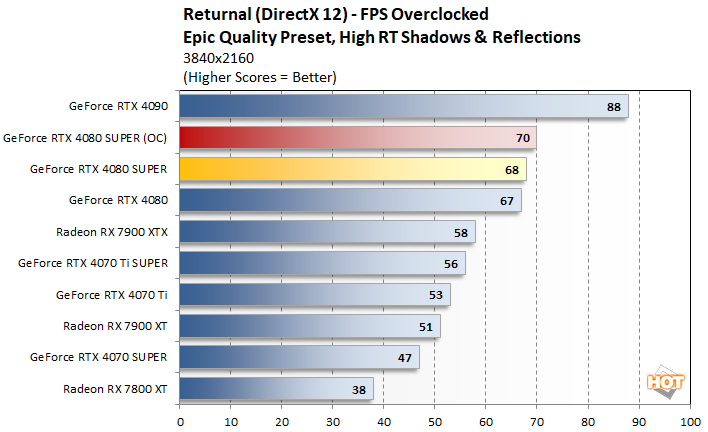
With the GeForce RTX 4080 SUPER overlclocked, we re-ran a couple of tests and saw some small performance improvements. The overclocked GeForce RTX 4080 SUPER distanced itself a bit further from the original RTX 4080 and inched closer to the GeForce RTX 4090, but ultimately there's no catching that beast.
Total System Power Consumption
Throughout all of our benchmarking and testing, we also monitored noise output and tracked how much power the GPUs were consuming in our test system. Our goal here is to give you an idea as to how much power each GPU used while idle and also while under a heavy workload. These power numbers were captured during Luxmark and F1 23 testing, with ray-tracing enabled, and are representative of total system power consumption.
Considering it's got more cores and higher clocks, and offers somewhat higher performance, you'd expect the GeForce RTX 4080 SUPER to consume more power than the original RTX 4080. Our sample, however, ended up consuming slightly less power than the original card. Process maturity and some firmware tweaks likely allowed NVIDIA to improve power efficiency somewhat on these latest SUPER cards, which is a welcome development. Power is also significantly lower than the Radeon RX 7900 XTX, especially with compute workloads, and is more in-line with the 7900 XT.
GeForce RTX 4080 SUPER Review Summary & Conclusion
NVIDIA set out to do a few things with its GeForce RTX 40 SUPER lineup. The ultimate goals were to improve performance, refresh its Founders Edition boards with a fresh aesthetic, and offer more value to gamers with reduced introductory price points versus the original models. Although the performance deltas separating the GeForce RTX 4080 SUPER from the original RTX 4080 are relatively small in comparison to the RTX 4070 and 4070 Ti SUPERs, it is still faster than the original. The GeForce RTX 4080 SUPER also arrives with a $999 MSRP, 20% below the RTX 4080’s $1,199 introductory price. A cool grand is not chump change, of course, but more performance at a lower price point is a good thing and we have to give kudos to NVIDIA for the move.The GeForce RTX 4080 SUPER may also put some additional pressure on AMD. Reference clocked Radeon RX 7900 XTX cards can be found for about $960 - $980 as of this publication, which may or may not require adjustment depending on your point of view. The GeForce RTX 4080 SUPER is faster overall, for only slightly more money – assuming street prices actually hit MSRP. The Radeon RX 7900 XTX will likely be faster with many titles that don’t use ray tracing, but the scales tip in favor of the GeForce RTX 4080 SUPER once ray tracing is factored into the mix. Many rendering and compute workloads also perform better on the GeForce RTX 4080 SUPER, and the GeForce is more power efficient too. We’ll have to see how things shake out in the next few weeks, but AMD may want to run some promos at the very least, to improve the Radeon RX 7900 XTX’s current value proposition in light of today’s launch.
In the end, NVIDIA’s brought its second fastest GPU down into the sub-$1,000 price bracket. That’s not cheap, but it’s a positive development nonetheless and we welcome it. The GeForce RTX 4080 SUPER is fast, power efficient, we dig the all-black aesthetic, and it is ultimately a better value for enthusiasts shopping for a high-end GPU.


